

About SEDL - Careers. Home | About Us | Careers SEDL is an Equal Opportunity/Affirmative Action Employer and is composed of a diverse workforce committed to solving significant problems educational systems face to ensure a quality education for all learners.
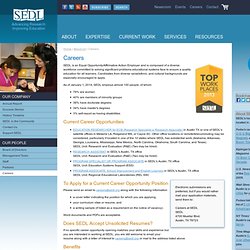
Candidates from diverse racial/ethnic, and cultural backgrounds are especially encouraged to apply. As of January 1, 2014, SEDL employs almost 100 people, of whom 78% are women40% are members of minority groups38% have doctorate degrees34% have master's degrees3% self-report as having disabilities Current Career Opportunities EDUCATION RESEARCHER for ECB (Research Specialist or Research Associate) in Austin TX or one of SEDL's satellite offices in Metairie LA, Ridgeland MS, or Cayce SC. Electronic submissions are preferred, but if you would rather mail your application materials, send them to: Careers at SEDL SEDL 4700 Mueller Blvd.
To Apply for a Current Career Opportunity Position Please send an email to careers@sedl.org along with the following information.  Why is EAFK considered to be the best character education resource available?
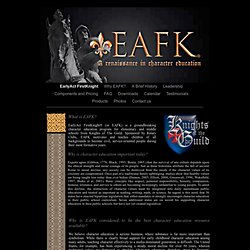
We believe character education is serious business, where substance is far more important than symbolism. While there is clearly broad support for early childhood character education among many adults, teaching character effectively to a media-dominated generation is difficult. The United States, for example, has been experiencing a steady moral decline for over 50 years, wherein traditional values are dismissed as obsolete.
Character education, therefore, must be frequent, strongly reinforced, and made relevant, fascinating, and rewarding to children in order to work. EAFK creatively accomplishes this through its unique method of making the subject material an exciting, pervasive experience rather than a mere course of study. Bibliography Gibbon, Edward (1776). Black, Jim Nelson (1995). Bonta, Steve (2005). Damon, William. (2005). Greenwalt, Charles E., II. Wakefield, Dara. (1997). Welcome to ItzGud.com! We always believe in smart work & why can’t we learn smartly.
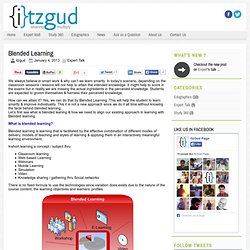
In today’s scenario, depending on the classroom sessions / lessons will not help to attain the intended knowledge. It might help to score in the exams but in reality we are missing the actual ingredients in the perceived knowledge. Students are expected to groom themselves & harness their perceived knowledge. How can we attain it? Yes, we can do that by Blended Learning .This will help the student to learn smartly & improve individuality. Chapter 11. Designing Blended Learning Space to the Student Experience.
Chapter 11.

Designing Blended Learning Space to the Student Experience Andrew J. Milne Tidebreak, Inc. The Emerging Student Experience What we think of as cutting-edge learning technologies today differ significantly from just a decade ago. Student Characteristics Developing a realistic, detailed sense of the student experience is an important starting point to the design process. Classrooms are not the only form of learning space. These trends emphasize that learning is becoming more social and informal and less structured. Current Conceptions of Learning Technology Even among IT professionals, it is common to refer to technology in a general way, as if it were a specific type of system.
» Blog Archive » A New Organizational Learning Model: Learning On-Demand. Posted on October 1st, 2007.
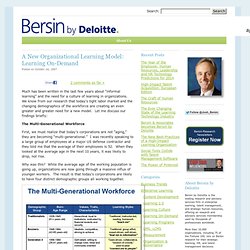
Much has been written in the last few years about “informal learning” and the need for a culture of learning in organizations. We know from our research that today’s tight labor market and the changing demographics of the workforce are creating an even greater and greater need for a new model. Let me discuss our findings briefly: The Multi-Generational Workforce First, we must realize that today’s corporations are not “aging,” they are becoming “multi-generational.”
Why was this? Fig 1: The Multi-Generational Workforce These groups each work differently and have different motivations and learning styles, and we as L&D professionals must consider this in each and every program. Blended-Learning Model Definitions. iNACOL » The Dimensions of Online and Blended Learning. In 2006, Greg Vanourek identified ten dimensions that defined an online learning program.

These dimensions later were published in the annual Keeping Pace with K-12 Online Learning publication. These characteristics of an online learning program greatly impact the way a specific program is structured from the details of the program’s policies, to the type of students that will be best served by the program. In 2010, Michigan Virtual University created a similiar diagram that defines seven dimensions of blended learning models. Again, these characteristics have significant impact on the structure of a specifc blended learning program. Online & Blended Learning. Blended learning.
Blended learning is an approach to learning in which different learning methods are combined.
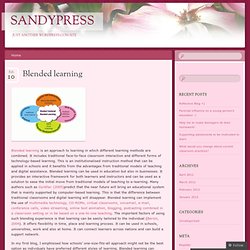
It includes traditional face-to-face classroom interaction and different forms of technology-based learning. This is an institutionalised instruction method that can be applied in schools and it benefits from the advantages from traditional models of teaching and digital assistance. Blended learning can be used in education but also in businesses. It provides an interactive framework for both learners and instructors and can be used as a solution to ease the initial move from traditional models of teaching to e-learning. Many authors such as Gynther (2005)predict that the near future will bring an educational system that is mainly supported by computer-based learning. In my first blog, I emphisised how schools’ one-size-fits-all approach might not be the best option as individuals have preferred different styles of learning.
References: Thorne, K. (2003). Like this: Like Loading... Blended learning models. Blended learning models.